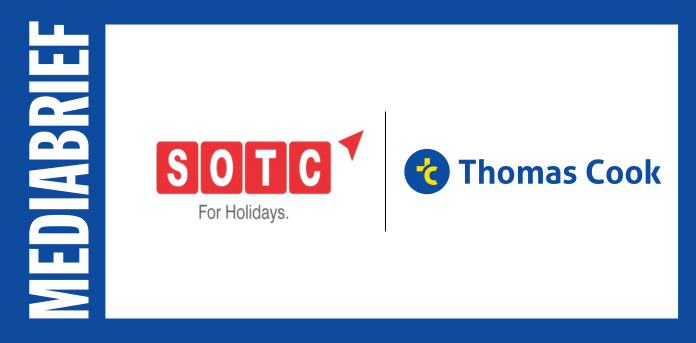Travel Guides & Articles
Will Offers & Orders Ever Supplant EDIFACT?

While plenty of corporate travel buyers and industry
suppliers are getting on the New Distribution Capability bandwagon, the
ultimate goal espoused by the International Air Transport Association is to get
airlines to adopt the IATA One Order standard for modern retailing.
What Is One Order?
NDC is part of it, but it doesn’t go all the way. As an
XML-based data transmission standard, NDC facilitates offer-and-order
management. One Order consolidates passenger name records, e-tickets and
electronic miscellaneous documents (e.g., ancillaries) into a unified record,
creating the order. In a way, NDC breaks airline content down into all the
component pieces, so One Order can pull it all back together again into
variable and interoperable offers and orders.
As has been the case with NDC, however, the industry has
been slow to adopt One Order, according to two recent reports, even though it
was introduced as an initiative in 2015. (Learn more in our One Order primer.)
Accelya on April 2 in conjunction with Atmosphere Research
Group released a report that found just 27 percent of airlines surveyed have
taken steps to develop offers and orders compared with 66 percent of airlines
that said they currently use NDC. A February report from Accenture found that
53 percent of airlines lack a dedicated order management system.
IATA director for distribution Yanik Hoyles, though, was
pleased with the progress so far. “If already today nearly 30 percent of
the airlines are choosing to move to the next phase, which is the journey to
100 percent offers and orders, I think that is great news,” he told BTN.
“If those are their numbers, I think they’re actually quite good.”
IATA has an Airline Retailing Consortium with 17
participating carriers, and the group in November 2024 released a roadmap for
transitioning to 100 percent offers and orders. The timeline projects that by
2030, O&O will be mainstream, and carriers will continue to move away from
their current passenger service systems and adopt offer and order management
systems.
Of the airlines with an order management system solution in
the Accenture study, however, most have integrated them with existing passenger
name record and ticket architectures. “Such hybrid setups are not designed
to serve as primary systems for order booking, servicing, delivery and
settlement,” Accenture argued.
A Hybrid Environment and Other Challenges
That sounds similar to what has happened with NDC: Airlines
have taken different paths to offering NDC, with little consistency among them,
and we’re likely to live in a hybrid world for some time, just as the industry
does with both EDIFACT and NDC fares in the marketplace as the transition to
modern retailing continues.
“There are some challenges to overcome,” Accenture
managing director and Europe travel lead Carsten Weisse said in an email.
“Technology readiness among airlines, travel management companies, online
booking tools and corporations is a concern, as many systems still rely on
legacy PNR/Ticket logic. Content fragmentation during the transition could lead
to uneven shopping experiences if some airlines adopt O&O faster than
others. Additionally, change management within corporate travel programs,
especially those optimized around existing global distribution system
workflows, will be crucial.”
Still, there are benefits to moving to an O&O world for
the corporate travel segment, Weisse said, including better-targeted offers for
corporate customers and better service and improved control “because
everything integrates more smoothly,” such as airlines with OBTs. Further,
“corporate travel policies like cabin restrictions, preferred suppliers
and sustainability limits are enforced right when the offer is created,”
he said, adding that O&O also will improve the quality of data and make it
more transparent. Lastly, “this change is set to simplify processes for
TMCs. This boost in efficiency should streamline back-office operations and
automate servicing, making things smoother.”
Louise Miller from Results Plus Consulting is skeptical.
“The crux of the situation is when we have an offers-and-orders type
approach, they’re not all going to be the same. It’s like e-tickets. Everybody
has e-tickets, but they don’t work the same way.”
Part of the issue is because airline retailing strategies
are not the same, Miller posited, so how can the offers and orders be the same?
She gave an example of how one airline might have a refundable versus
non-refundable fare, and the next airline might have a fee to make it
refundable to the same form of payment, and if a customer doesn’t pay that fee,
then it’s refundable only as a voucher.
“Just because one airline does that and paying that fee
to make it refundable to the original form of payment would be in the offer and
order, but it doesn’t mean everyone’s going to do it that way,” she said.
IATA’s Hoyles agreed that airlines “will always have
their own commercial strategy, whatever the standard used.” His example
noted that today in EDIFACT, airlines may have different refund policies to
differentiate themselves from competition, but they all use the same EDIFACT
standard, and they are all using the PNR, tickets and EMDs. “With offers
and orders replacing e-tickets, PNRs and EMDs, airlines can still each have
different price levels, different bundles, different refund policies.”
Miller pointed out two other items that Weisse touched on.
Proponents of One Order say companies will have a better line of sight into
their spend. “The reverse side of that is they’re going to have a better
line of sight into the value of your account, because they’re going to know
more about the various pieces and parts of things that are being bought when a
ticket is issued under your corporate discount number.”
But what can be shared with the corporate customer if the
ticket was issued on a corporate discount program, but the traveler used a
personal form of payment to buy their upgrade? “Who owns that?”
Miller asked. “That’s a big source of debate.”
The other issue is related to company expense procedures and
policies. “They already are very lacking in dealing with all these
ancillaries,” Miller said. “Travelers today buy a bunch of things on
a trip, and then they decide what to expense and what not to expense, and they
either do or do not have requirements to use their corporate card for pieces of
it. So, the expense policies and procedures are not fit for purpose for offers
and orders.”
Miller said her company is telling corporate travel managers
to look at what their travelers are buying and what they are expensing and what
the policy says. “You need to know, because how are you going to revamp
your policy so that everything isn’t an exception in this new world? … If the
purchases are mixed [with a] personal form of payment and corporate form of
payment, the gap between your expense policy and your practice of what’s
happening in your program is going to grow as this matures.”
The ATPCO Elevate conference earlier in April featured a
session on offers and orders, and panelist George Bryan, senior director of
distribution for Hawaiian Airlines, also noted payments as a potential
challenge. “Payment often gets forgotten or is an afterthought,” he
said. “Now there’s so many different wallets out there, different types of
forms of payments that we didn’t use before. Ensuring that we can transact with
guests and then settle it is key. So, settlement is very, very much key to
ensuring that OOSD is going to work well.”
FCM Travel director of air content and distribution Nicola
Ping concurred on the need for settlement advancement. “If you think about
how settlement works today, it’s quite dead, the idea that you’re going to
batch things up and send them to somebody every two weeks when you’ve got now
people buying in real-time online. … We have to deal with that where customers
are transacting.”
Ping further noted the expense related to the industry
transformation. “One of the key people to get on board is the CFO and the
whole finance team if it’s the eleventh hour and you need to talk about
settlement, and suddenly we discover the risks associated with the
sellers,” she said. “The finance team have got enough power to put
the complete stoppers on all of the projects, so that’s why I really want that
[settlement focus]. But I’ll be honest. I’ve been a bit disappointed. We put ourselves
out there and offered ourselves to do concept on settlement to quite a lot of
people, and a lot of people at first think it’s a good idea, then they go away
and have some internal conversation [and they’re] not ready to do it until 2026
or 2027. So, I think we really need a bit of a push in that direction.”
Forging Ahead
Still, 72 percent of carriers surveyed for the Accelya white
paper consider the transition to offers and orders “import” or
“very important.” About 44 percent believe they’ll transition by
2028, while 38 percent expect to remain on passenger servicing systems until at
least 2029.
“The gap between retailing appetite and execution is
closing, with 2028 and 2029 realistic for transitions,” travel industry
analyst and president of Atmosphere Research Group Henry Harteveldt said in a
statement. “Hesitancy to move stems from internal constraints, legacy
contracts, and uncertainty around ROI. Airlines want to break free from
restrictive tech and replace it with agile, open platforms. Cloud-ready,
modular infrastructures are the path forward—enabling faster experimentation,
product launches, and integration, all while enhancing customer experiences and
delivering more personalized, seamless travel.”
Accelya chief customer success officer Tye Radcliffe added
in a statement that “the key is to remember that transformation doesn’t
require a full system overhaul. … What’s undeniable is that the transformation
is already underway. Early adopters are gaining a competitive edge—and as more
airlines reach critical mass, the pace of change will accelerate.”
Distribution patterns by channel are predicted to shift
considerably between data from 2023 and estimates for 2028, according to the
Accelya report. The EDIFACT channel accounted for a 33 percent share of
distribution in 2023 and is projected to be at 14 percent in 2028. GDS NDC is
expected to grow from 1 percent to 9 percent, and the NDC direct channel could
grow from 4 percent to 9 percent.
Overall, airlines estimated that in 2023, NDC-based channels
accounted for 7 percent of fare distributions and that could grow to 21 percent
by 2028.
As for the transition to an offers and orders management
system, in addition to the 27 percent of Accelya respondents who have started
down that path, 20 percent have developed an O&O strategy but lack a budget
for implementation, 33 percent are interested in O&O but have not yet
developed a business case for it, and 15 percent are evaluating whether to use
O&O. Just 5 percent have not started their O&O evaluation.
Accenture’s paper used a combination of proprietary
research, articles from industry publications, supplier sources, IATA
resources, and a research study conducted in August 2024 that surveyed 3,000
travelers across six countries, and 300 C-suite executives from global travel
companies. The company also conducted live, real-time interviews with 100
travelers across the U.S. and India and used an AI-powered analysis to cluster
their responses “to uncover actionable insights and key traveler sentiment.”
The Accelya/Atmosphere Research Group report methodology
included an online survey in late 2024 with 78 airline participants, Atmosphere
Research Group supplemental research with survey respondents, and 28 telephone
interviews with airline professionals, industry consultants, retail analysts
and consultants, and Accelya executives.
Travel Guides & Articles
GST hike to make premium air travel costlier

The Goods and Services Tax Council has raised the levy on non-economy air travel from 12% to 18%, a move experts believe will drive up fares for passengers travelling in premium economy (PE), business and first class.
While the rate for economy travel stays unchanged to keep airfares affordable for mass travellers, the steeper GST on upper classes has triggered concern among airlines and online travel agents. Prior to the Council announcing the new tax regime on Wednesday, two major airlines requested for GST on all classes to be brought to 5%, three government officials confirmed to HT.
Former president of Travel Agents Federation of India (TAFI) Ajay Prakash said the new GST rate has come at a time when the Indian aviation market is going through a “very sensitive phase”.
“Increasing the GST for upper class fliers directly means airfares for all the three classes will shoot up,” he said. “While the government claims to promote Indian aviation by bringing in big aircraft, etc., levying higher GST is only going to discourage individual fliers to book on non-economy classes.”
Jitin Makkar, senior vice president and group head of corporate sector ratings in ICRA Limited, noted the additional levy will be passed on to the consumers.
An airline insider requesting anonymity said that the increase is no revolution but it is enough to make airlines rethink budgets and booking strategies. “Let alone the Air India crash (June 12 disaster that claimed 260 lives) that shook passenger confidence, Indian airlines are facing major troubles due to the ongoing Pakistan airspace closure leading to more flying time and increased airfares. At such a time, it was needed that the sector be allowed to remain untouched,” the official said.
A former airline official echoed similar views, saying, “India has only two major airlines now –– while one is trying to regain passenger trust while facing a loss of ₹5,000 crore due to Pakistan closing its airspace, the other (IndiGo) has just entered into the segment and launched its business product.”
Sheldon Hee, regional vice president, Asia Pacific, International Air Transport Association (IATA) termed the move “disappointing”. IATA is a global trade association of airlines, representing around 300 airlines or about 80% of worldwide air traffic and acts as a global voice of the airlines.
“In many ways, India has been an amazing aviation story with its impressive growth, record aircraft orders, and world class infrastructure. Aviation has tremendous potential to contribute to India’s economic growth, both directly as Indian airlines grow, and indirectly through increased connectivity for travellers and businesses alike. It is, therefore, disappointing to hear of a decision to increase the GST on non-economy travel with no clear justification,” Hee said.
“This increase runs counter to the efforts of Indian carriers, which have been investing in their premium products to enhance the travel experience on their flights. Tax on non-economy air travel has risen dramatically –– GST is at 18% after yesterday’s announcement, compared to the 8.6% rate in 2017 under the service tax regime.”
Hee also said that for its aviation industry to thrive, India needs to take a whole of government approach in considering broader policy and consider the risks of such policies on dampening demand and undermining profitability in order for its aviation industry to thrive.
“Asia Pacific airlines are forecast to only earn $2.60 per passenger in 2025. Taxing premium travellers, where these customers often make a difference to a route’s viability, is counterproductive,” he added.
Makkar, however, said that the increase should not have a significant impact on the business class segment considering this segment’s low price elasticity, though there could be some amount of downtrading to the economy segment.
“By keeping rates stable for economy travellers, this measure is likely to ensure continued affordability, thus making air travel more accessible,” he concluded.
Travel Guides & Articles
Industry’s finest to be recognised at the India Travel Awards on 9 September in Delhi – Tourism Breaking News

Travel Guides & Articles
Festive travel packages by Thomas Cook India and SOTC Travel

Traditionally, Indian festivals have been celebrated at home or in ancestral houses, with families gathering under one roof. Recently, Indian consumers have also been choosing to travel and celebrate festivals with multi-generational family units and friends.
Thomas Cook India and SOTC Travel’s India Holiday Report 2025 highlights this shift in consumer behaviour, with demand for longer festive breaks, higher holiday spends and interest in experiences ranging from heritage and luxury stays to cruises and new destinations.
To tap into this growing festival travel trend, Thomas Cook (India) Limited, an omnichannel travel services company, and its Group Company, SOTC Travel, have introduced a specially curated range of holidays for the upcoming festive season, featuring special group tour departures from Kolkata for Durga Puja and Karnataka for Dussehra, as well as from high-potential markets of Gujarat and Maharashtra. In addition, the companies have also announced special Diwali departures across key pan-India markets.
The companies have also announced a special offer: discounts of up to Rs.10000 per transaction across select holidays via HDFC credit cards.
Festive tourism trends
Longer stays and increased spends: From the traditional 3 days Indians are now extending their stays to 6-12 days (multi-generational families combining school vacations like Dussehra, Durga Puja and Diwali). Young India’s millennials/GenZ and working professionals are embracing extended trips, combining weekends with festival holidays for a 5-6 day break
Favourite destinations:
-
Domestic & Indian Subcontinent: Andaman, Kerala, Kashmir, Himachal Pradesh, Rajasthan, Goa, Karnataka, North East, Sri Lanka, Bhutan and Nepal
-
International: Thailand, Singapore with Bintan, Malaysia, Sabah, Indonesia, Vietnam, Oman, Australia-New Zealand, Switzerland, France, Finland, Japan, Georgia, Germany, Spain, Austria, Kenya, South Africa, Dubai, Abu Dhabi, Maldives, Mauritius, South Korea
-
Visa-Free, Visa-on-arrival and easy-visa destinations in demand: Thailand, Malaysia, Philippines, Sri Lanka, Nepal, Bhutan; Dubai-Abu Dhabi, Indonesia, Maldives
- Spiritual Journeys: Leveraging festive sentiment, Thomas Cook and SOTC have curated spiritual journeys through their Spiritual Journeys & Darshans portfolio – featuring Char Dham, Kashi, Ayodhya, Rameswaram, Tirupati, Amritsar, Varanasi, Prayagraj, Dwarka and Sri Lanka with special themed tours such as ‘Ramayan Anant Yatra’ and ‘Ramayan Trails’
- Premium/affordable luxury travel: Customers are opting for luxury resorts and spas, with destinations like France, Switzerland, Scandinavia, South Korea, Japan, Singapore, Australia, New Zealand, Oman, Morocco, Seychelles
- Cruising: Strong interest for sailings across South East Asia and the Middle East (Costa Cruises, Resorts World Cruises); premium sailings like Disney Cruise Line in Australia and Singapore; domestic (Cordelia)
- Festival regional group tours: The companies are witnessing strong interest in their regional tours: Adhbhut Asia, Alokik Asia, Ashadharon Vietnam, Duronto Dubai O Abu Dhabi, Akorshonio France O Swiss with departures accompanied by regional tour managers; on-tour puja and curated vegetarian meals on select tours
Rajeev Kale, President & Country Head, Holidays, MICE, Visa – Thomas Cook (India) Limited said, “Travel has become non-negotiable and festive tourism serves as a cultural driver. We are witnessing a strong and exciting trend—Indians are no longer staying at home but increasingly choosing to celebrate festivals while travelling. This is reiterated in our India Holiday Report 2025 that also reveals a strong shift—85% of Indians are increasing their travel frequency and budgets, driven by a desire to celebrate culture in immersive, meaningful ways.
Hence, to maximise this opportunity we have launched innovative festive regional groups tours like Adhbhut Asia, Alokik Asia, Ashadharon Vietnam, combining local and authentic experiences to meet the aspirations of India’s new-age travellers.”
S.D. Nandakumar, President & Country Head – Holidays and Corporate Tours, SOTC Travel Limited said, “India’s festive calendar is fast emerging as a travel driver. Families and friends are increasingly using these breaks to create multiple holidays rather than a single long annual holiday. Significantly, this trend is not restricted to customers from metro cities, but also from India’s tier 2 and 3 markets, reflecting a strong, nationwide aspiration to travel. Travellers are also embracing new formats—cruise holidays, boutique and heritage stays, luxury villas and immersive experiences like culinary trails and adventure activities. At SOTC, we have designed our festive portfolio to blend celebration with exploration—curating domestic and international tours that allow Indians to experience their festivals in unique settings, while creating deeper connections and lasting memories.”
-

 Business6 days ago
Business6 days agoThe Guardian view on Trump and the Fed: independence is no substitute for accountability | Editorial
-
Tools & Platforms3 weeks ago
Building Trust in Military AI Starts with Opening the Black Box – War on the Rocks
-

 Ethics & Policy1 month ago
Ethics & Policy1 month agoSDAIA Supports Saudi Arabia’s Leadership in Shaping Global AI Ethics, Policy, and Research – وكالة الأنباء السعودية
-

 Events & Conferences4 months ago
Events & Conferences4 months agoJourney to 1000 models: Scaling Instagram’s recommendation system
-

 Jobs & Careers2 months ago
Jobs & Careers2 months agoMumbai-based Perplexity Alternative Has 60k+ Users Without Funding
-

 Education2 months ago
Education2 months agoVEX Robotics launches AI-powered classroom robotics system
-

 Funding & Business2 months ago
Funding & Business2 months agoKayak and Expedia race to build AI travel agents that turn social posts into itineraries
-

 Podcasts & Talks2 months ago
Podcasts & Talks2 months agoHappy 4th of July! 🎆 Made with Veo 3 in Gemini
-

 Podcasts & Talks2 months ago
Podcasts & Talks2 months agoOpenAI 🤝 @teamganassi
-

 Education2 months ago
Education2 months agoMacron says UK and France have duty to tackle illegal migration ‘with humanity, solidarity and firmness’ – UK politics live | Politics





















